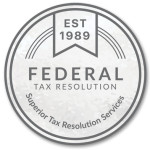Blog > Politics amp Presidents > IRS CUSTOMER SERVICE PRIORITY FOR CONGRESS
IRS CUSTOMER SERVICE PRIORITY FOR CONGRESS
October 17, 2018 - Douglas Myser
IRS customer service priority for congress. That was the message from Nina Olson, the IRS Taxpayer Advocate. As the IRS has endured cutbacks in recent years and customer service has suffered, multiple calls have arisen to set priorities to give priority to funding the IRS to increase the number of Enforcement Agents at the IRS. Those calls have become more frequent, and have now crossed the political spectrum, as the budget deficits have increased. The IRS brings in nearly $6 for every dollar spent on the agency. IRS customer service for congress.
IRS customer service priority for congress is also getting the ear of President Trump, as Secretary Mnunchin has discussed increased funding to bring in additional revenue. The most significant challenge the IRS faces in the upcoming year is implementing the Tax Cuts and Jobs Act of 2017, which among other things requires programming an estimated 140 systems, writing or revising some 450 forms and publications and issuing guidance on dozens of TCJA provisions. Ms. Olson expresses confidence that the IRS will implement the law successfully. "Make no mistake about it. I have no doubt the IRS will deliver what it has been asked to do," she writes in the preface to the report. The IRS is also implementing the IRS Fresh Start Program for taxpayers behind on taxes. Those taxpayers who face Collection Action from the IRS, such as an IRS Wage Garnishment, need to call on a Tax Resolution Company for help.
In her preface to the report, Ms. Olson focuses on the IRS's customer service challenges. The report says the IRS utilizes narrow performance measures that suggest the agency is performing well but do not reflect the taxpayer experience. For example, the IRS reports it achieved a "Level of Service" on its toll free telephone lines of 80 percent of taxpayer calls. In fact, the report points out IRS telephone assistors answered only 29 percent of the call the IRS received. Similarly, the IRS reports it achieved a customer satisfaction level of 90 percent on its toll free lines during FY 2017. Yet the report points out that the IRS only surveyed the subset of taxpayers whose calls were answered during the study.
